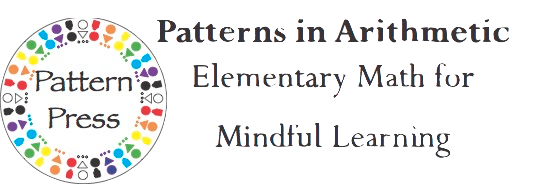

Discover the joys of learning mathematics. Students and adults become empowered by building models using household items, Cuisenaire Rods, Base Ten Blocks and pattern blocks to prove their own ideas. Adults, along with their students, explore how arithmetic works in the real world. Lessons come with worksheets, games, and other hands-on activities. Students learn to think as mathematicians think.
The unique teaching method encourages students to find and use patterns, make generalizations, and understand number concepts by building models with manipulatives to create models of arithmetic procedures. Then they record their discoveries in ways that make sense to them. They learn arithmetic by doing mathematics. This teaching method builds confidence in students’ thinking ability. These time proven methods were developed at the world renowned University of California, Irvine Farm Elementary School and then refined and field-tested for twenty years at Chrysalis Charter School in Redding, California.
Students become accomplished mathematicians not by drilling it into them, but by giving them time to discover their own procedures for doing arithmetic operations. Most important this series assists parents/teachers in learning how to teach so that the student does the discovering. An approach to this type of math instruction requires parents to ask appropriate questions when students are stuck and guide them to find their own solutions. The need for the parent/teacher to understand this teaching technique is stressed by the authors.
Patterns in Arithmetic: Books 1 and 2 are for Grade 1 six-year-old students, and Grade 2 seven-year-old students. All subjects taught are included in two comprehensive books: Parent/Teacher guide and Student Workbook.
Patterns in Arithmetic: Booklet series are for Grades 3 to 5 seven-to-ten-year old students. Each subject comes in two small booklets: Parent/Teacher Guide and Student Workbook.
These books lay a foundation of understanding and encourages all learners to:
- make up their own problems
- estimate and predict
- look for and discover patterns
- develop flexibility in thinking
- verify and prove answers
- pursue their own creative mathematical investigations
